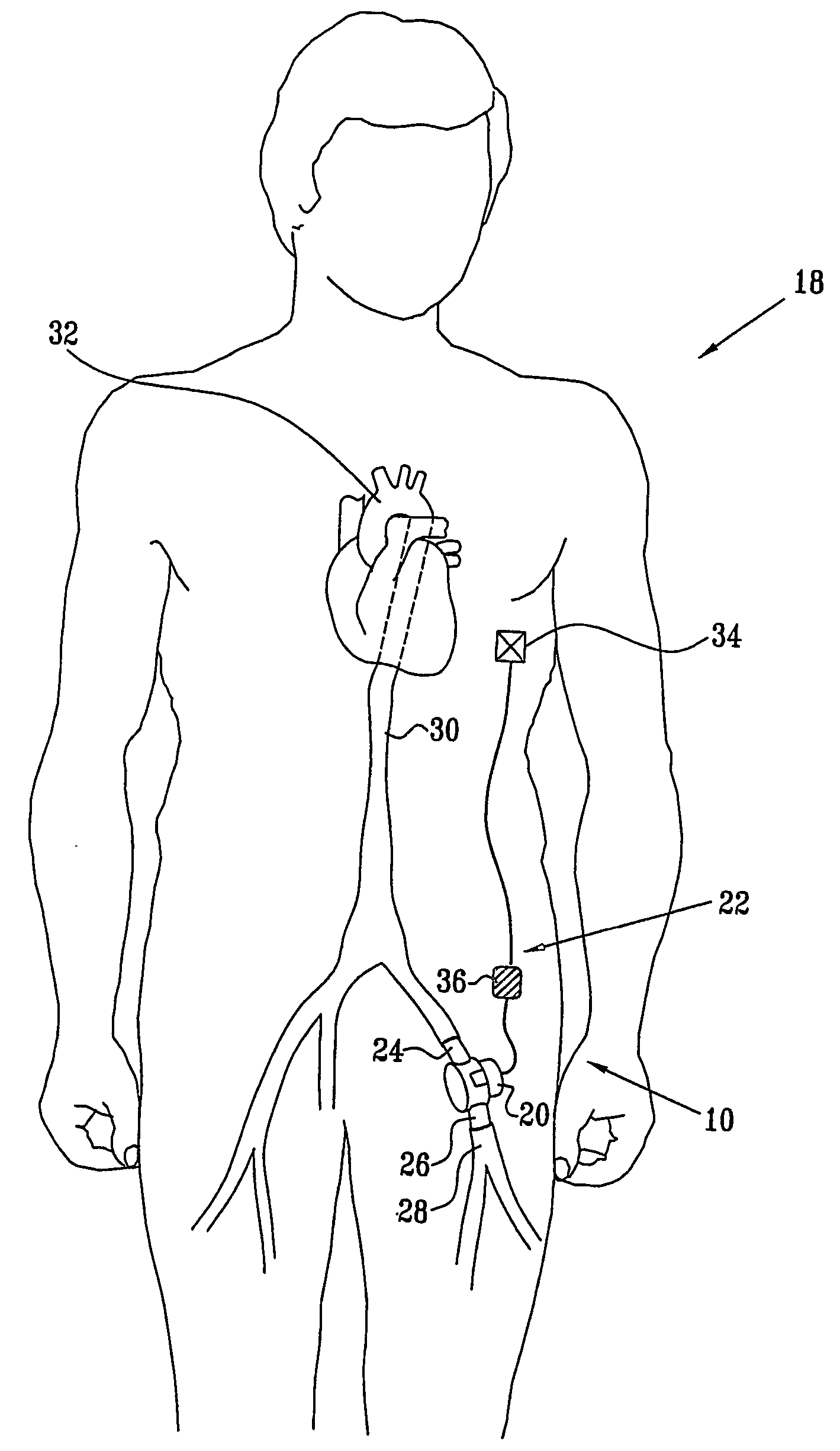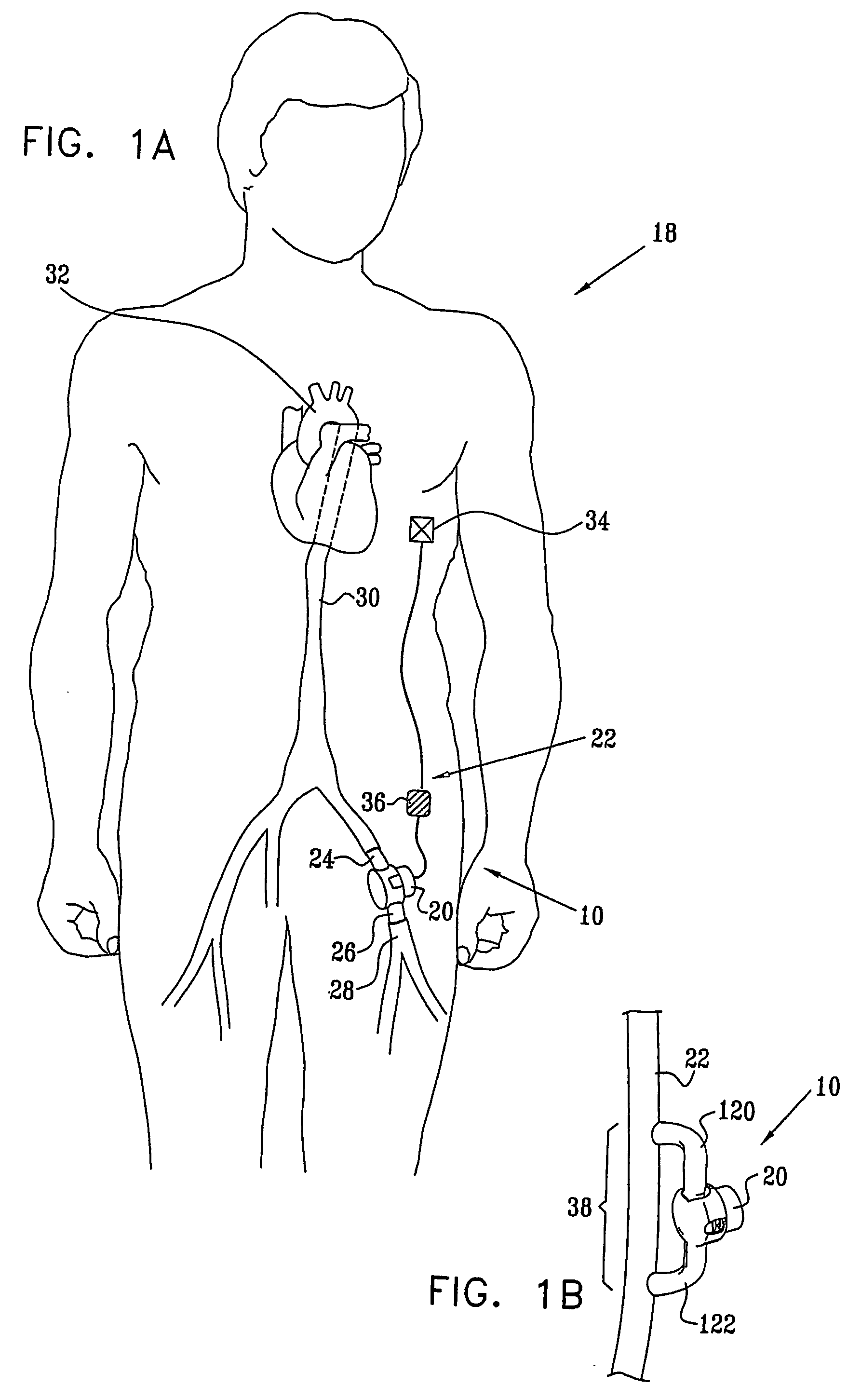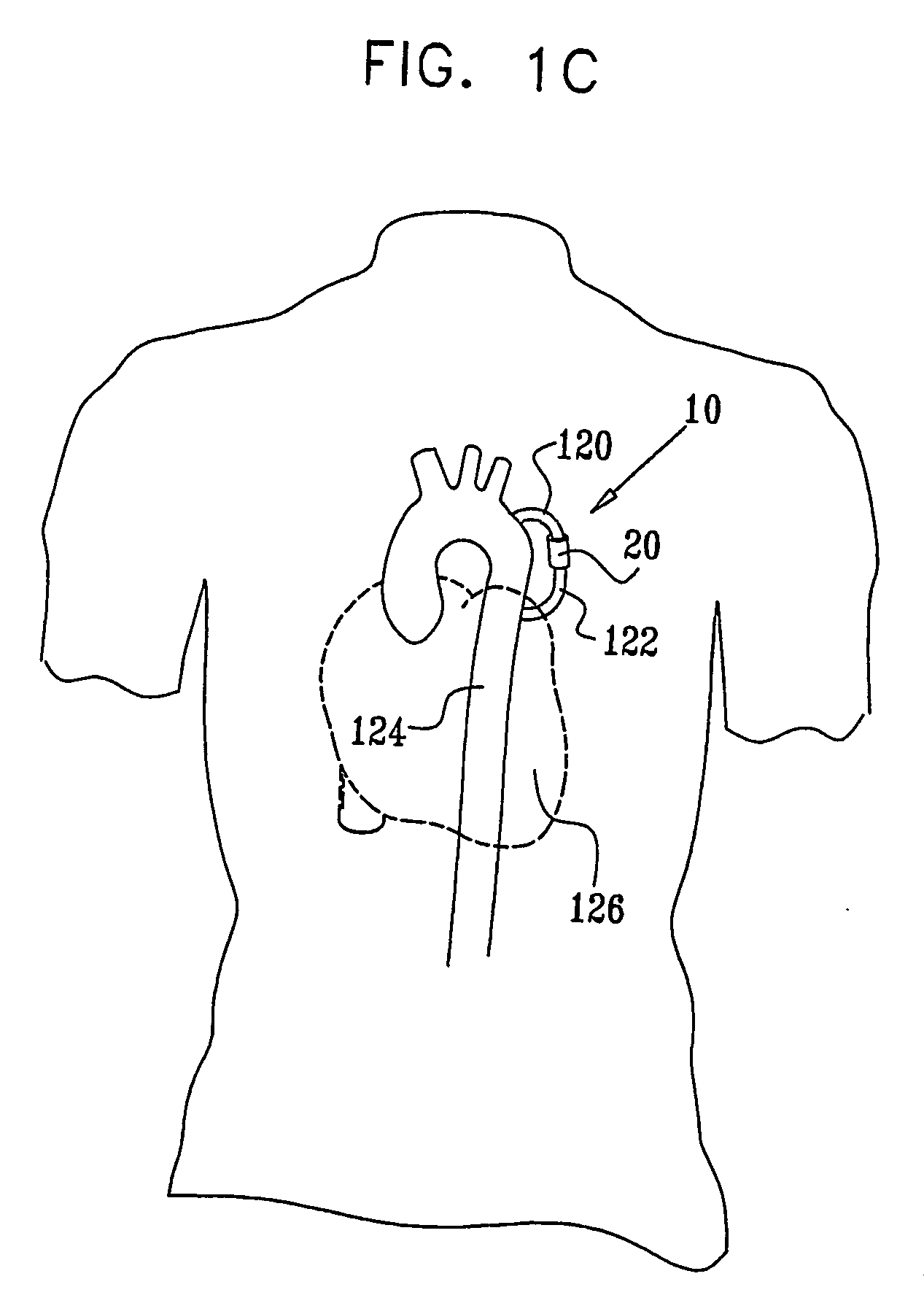Fully-implantable cardiac recovery system
a cardiac recovery and fully implantable technology, applied in the field of fully implantable cardiac recovery systems, can solve the problems of electrodes coming into electrical contact with each other, and achieve the effects of reducing systemic blood pressure, increasing systemic blood pressure, and regulating blood pressur
- Summary
- Abstract
- Description
- Claims
- Application Information
AI Technical Summary
Benefits of technology
Problems solved by technology
Method used
Image
Examples
Embodiment Construction
[0231]FIG. 1A is a pictorial view of a cardiac recovery system 10, comprising a cardiac recovery device 20 implanted in a blood vessel 22 on the arterial side of the circulation of a subject 18, in accordance with an embodiment of the present invention. Device 20 is generally implanted in arterial blood vessel 22 during a simple surgical procedure in which the artery is cut, and respective cut ends of the artery are attached to an inflow conduit 24 and an outflow conduit 26 of the device, so that blood flowing through the artery passes through device 20. Device 20 is typically implanted in an iliac artery 28, a descending aorta 30, an ascending aorta 32, or another peripheral artery of subject 18, such as a femoral artery. For some applications, system 10 comprises an implanted or external control unit 36, and one or more implantable or external sensors 34, which are typically adapted to generate an electrocardiogram (ECG) signal.
[0232]FIG. 1B is a pictorial view of an alternative ...
PUM
 Login to View More
Login to View More Abstract
Description
Claims
Application Information
 Login to View More
Login to View More - R&D
- Intellectual Property
- Life Sciences
- Materials
- Tech Scout
- Unparalleled Data Quality
- Higher Quality Content
- 60% Fewer Hallucinations
Browse by: Latest US Patents, China's latest patents, Technical Efficacy Thesaurus, Application Domain, Technology Topic, Popular Technical Reports.
© 2025 PatSnap. All rights reserved.Legal|Privacy policy|Modern Slavery Act Transparency Statement|Sitemap|About US| Contact US: help@patsnap.com



